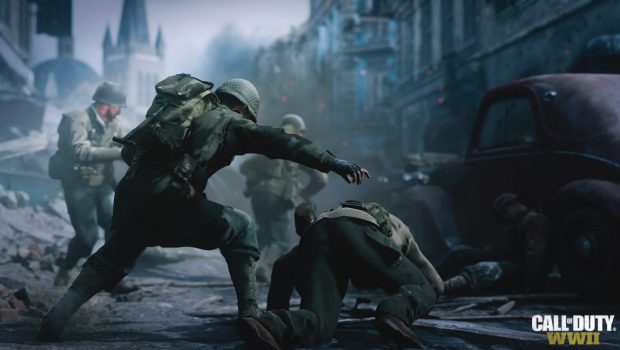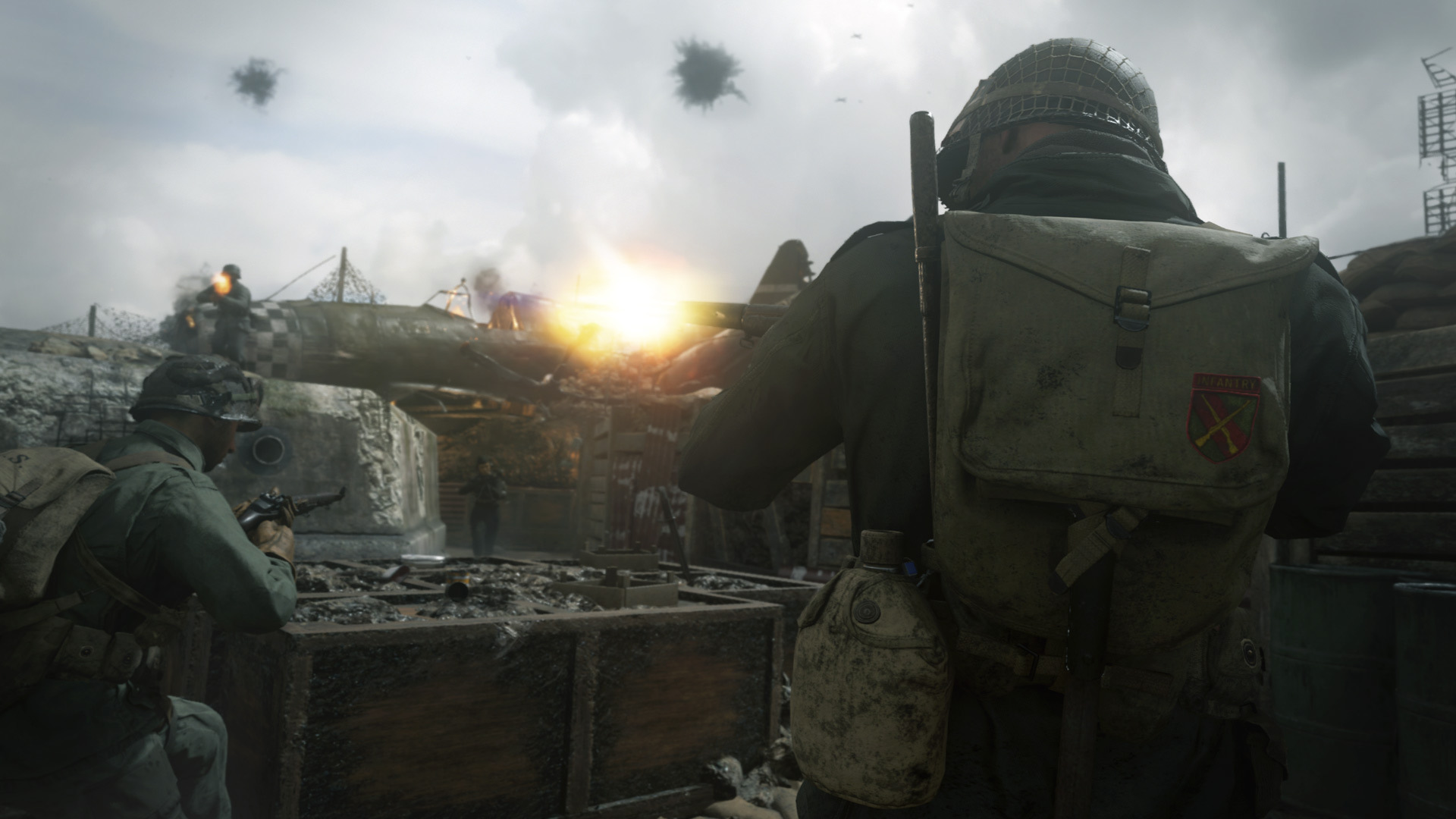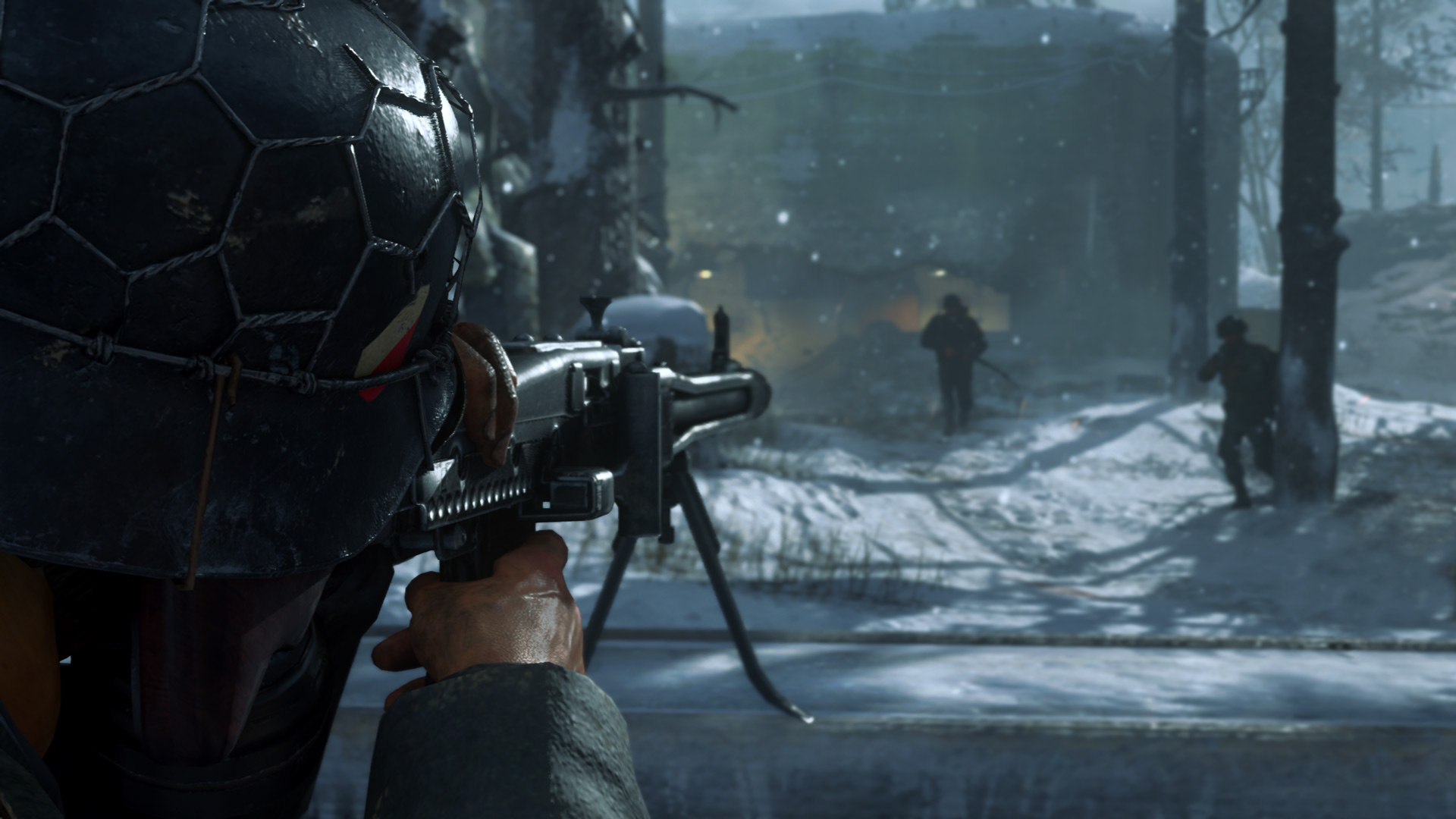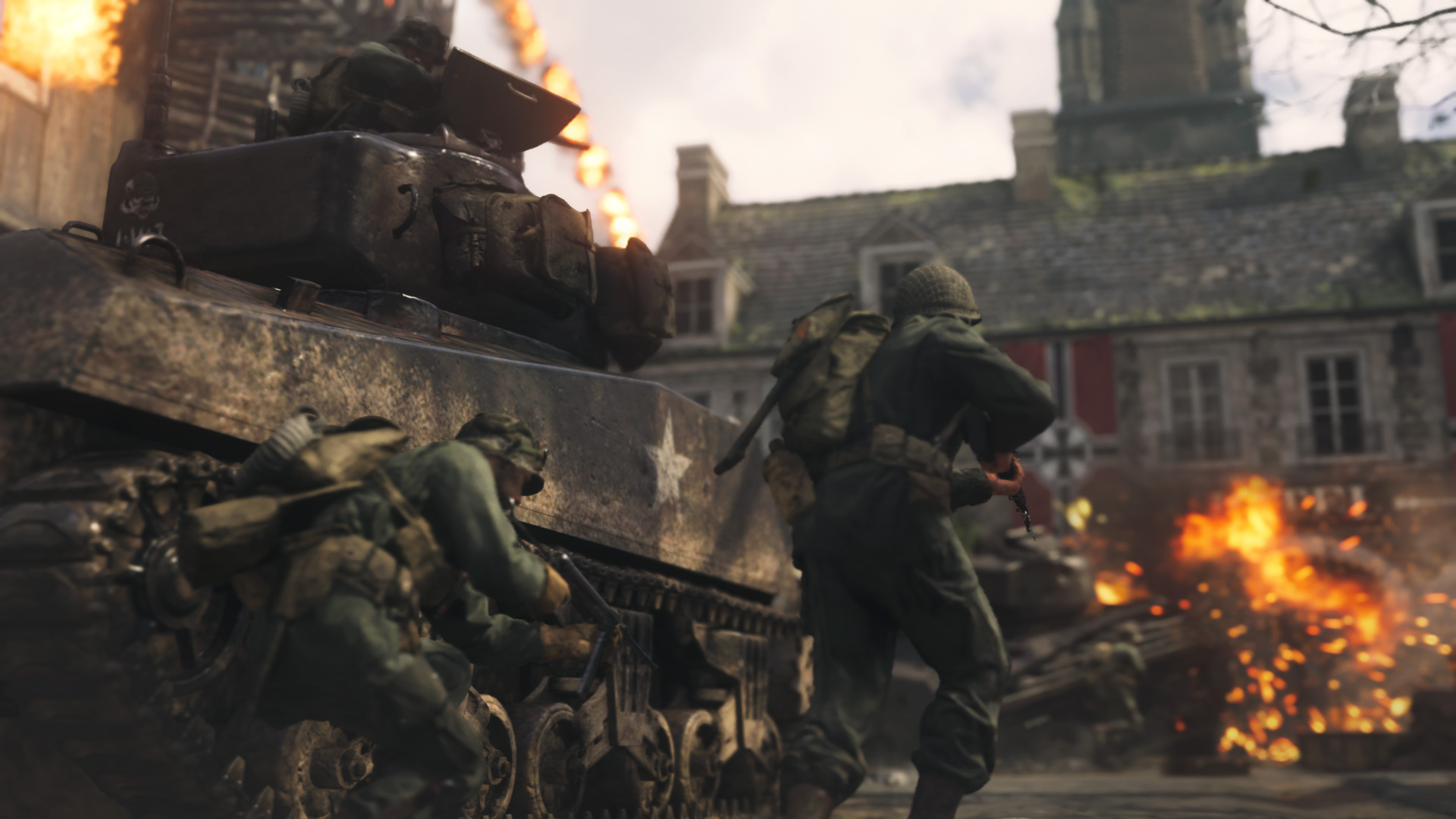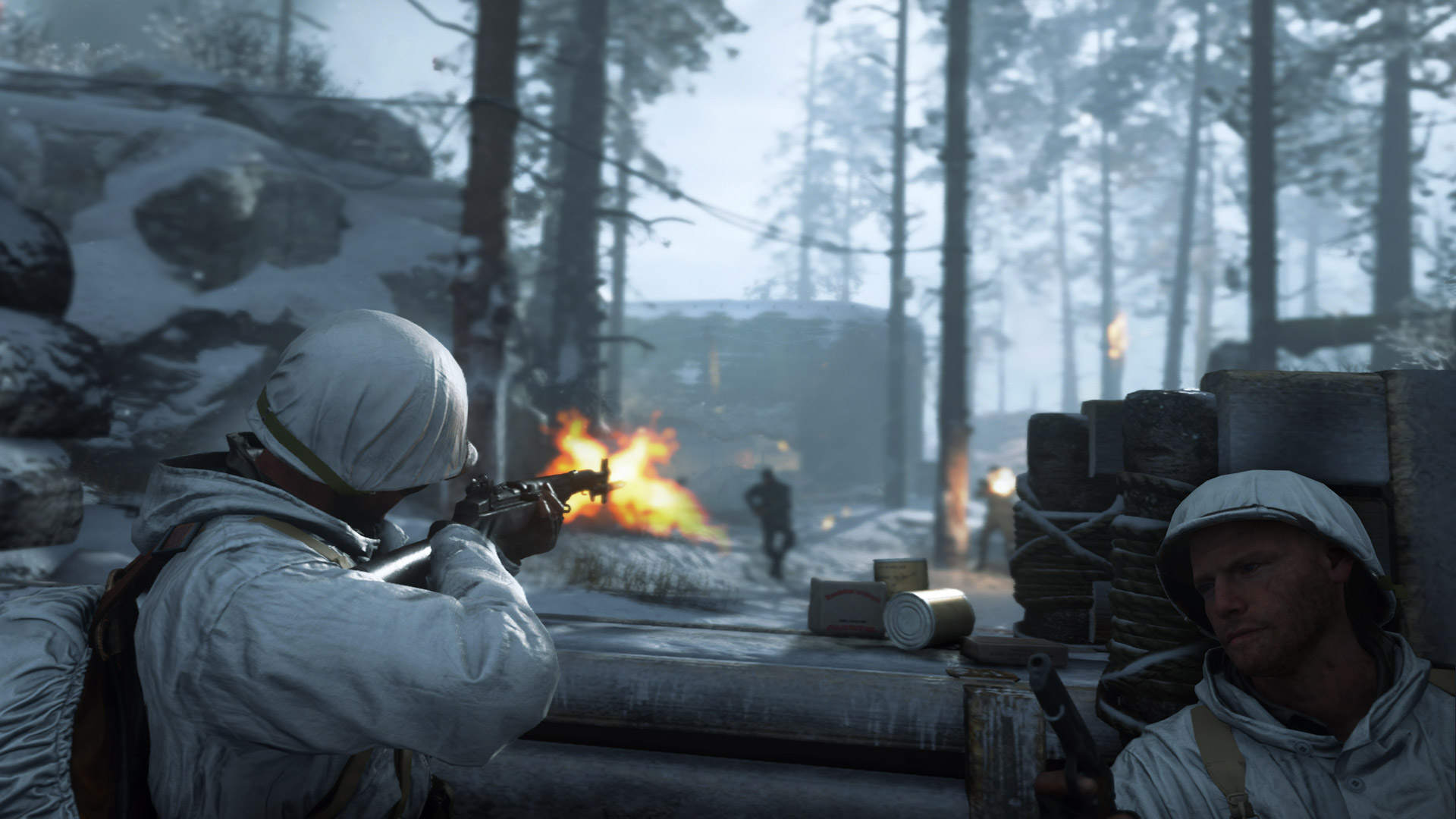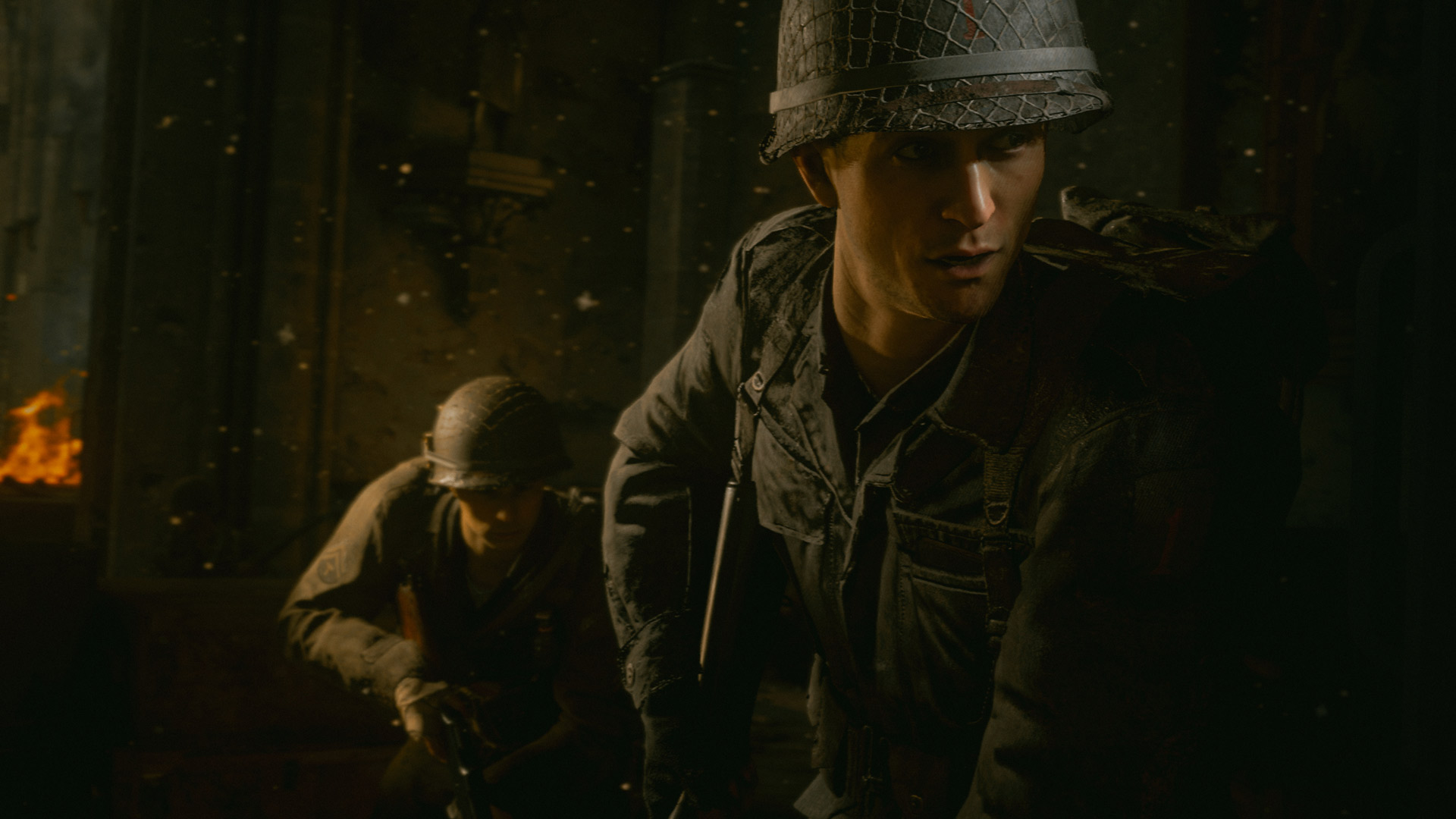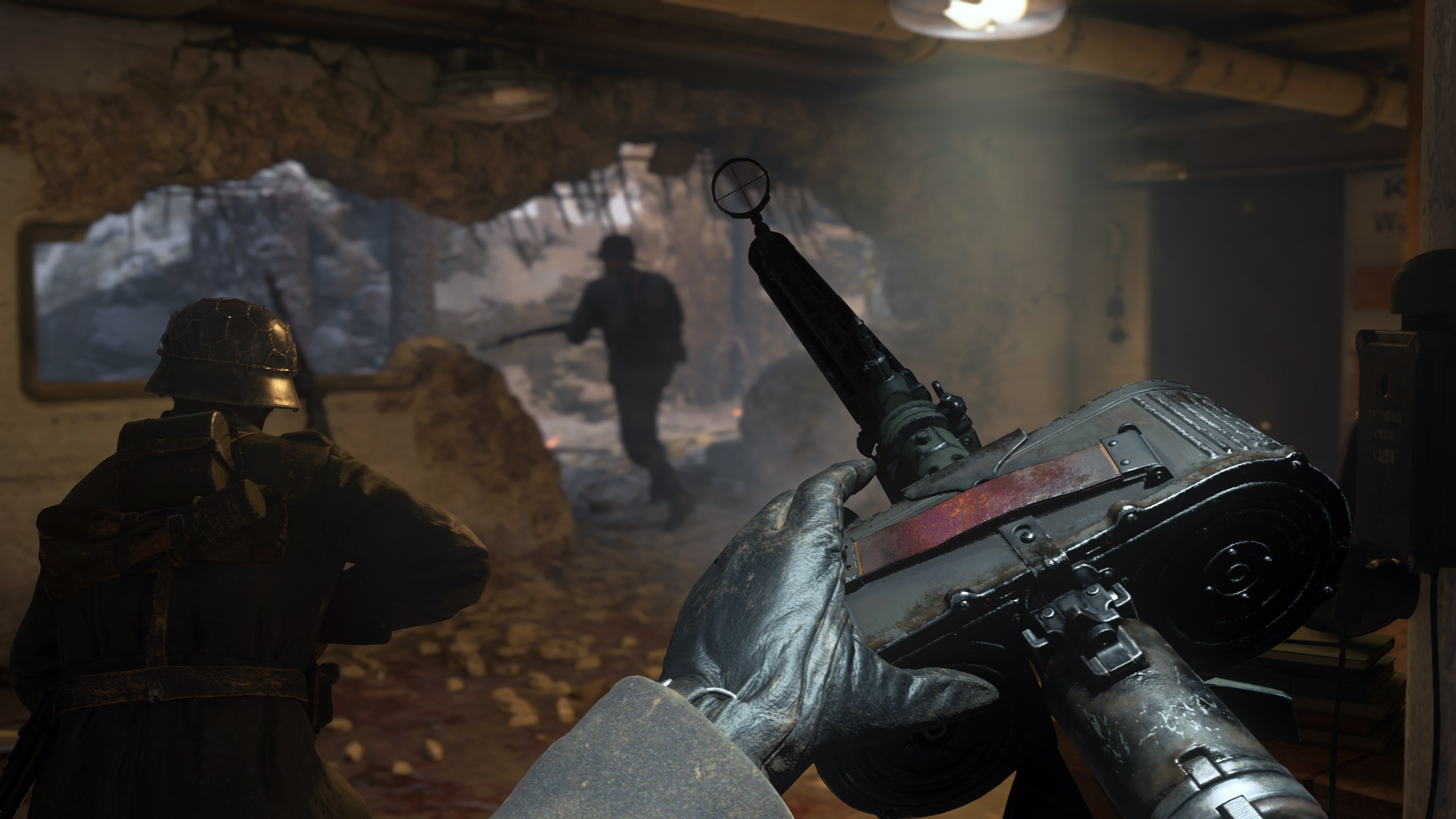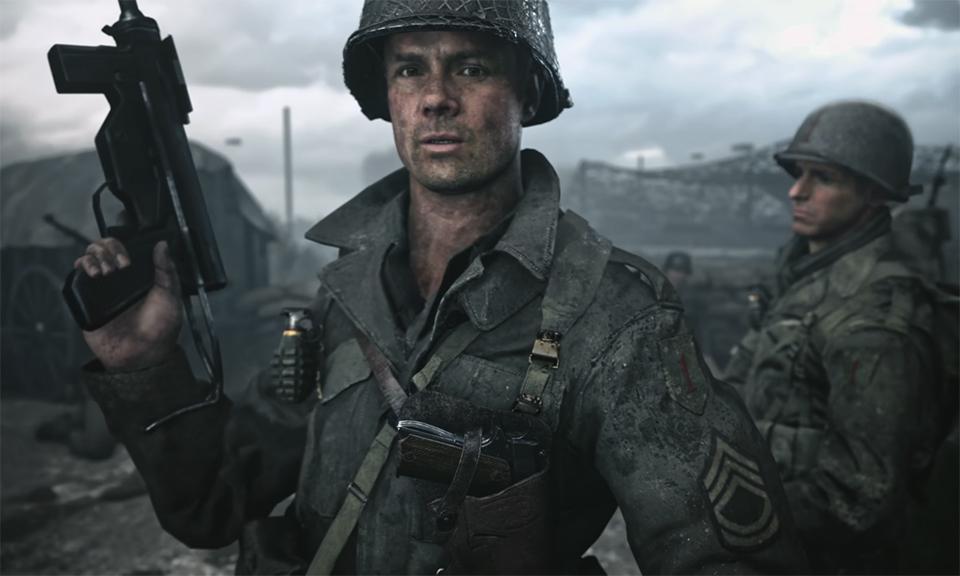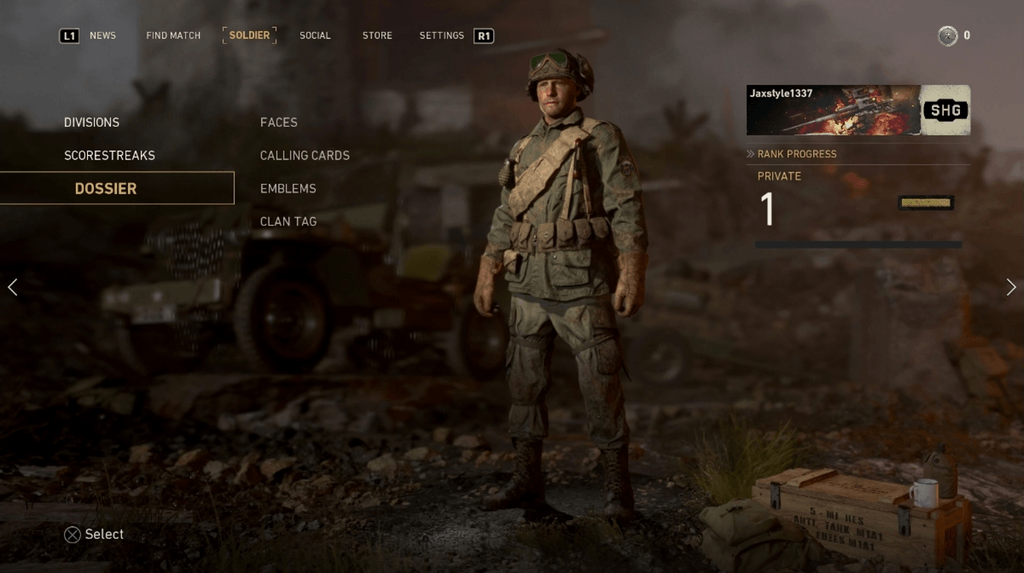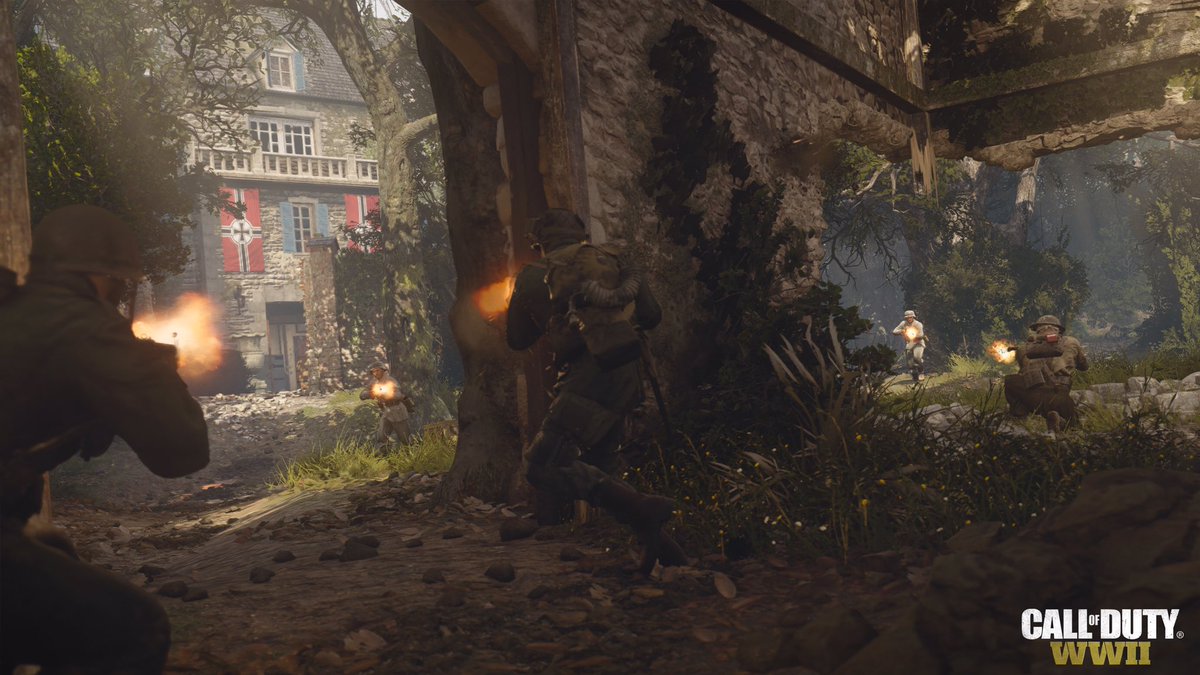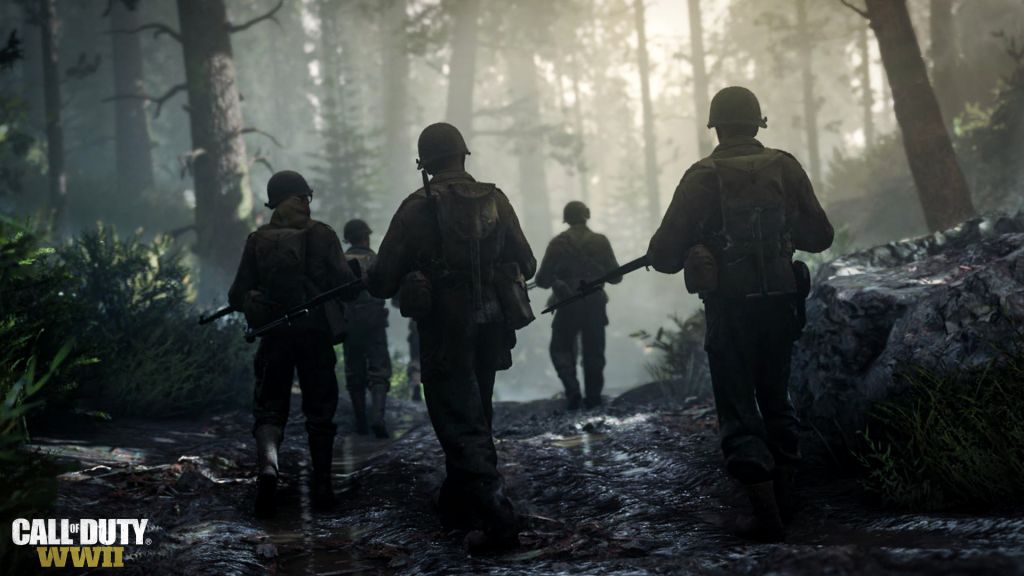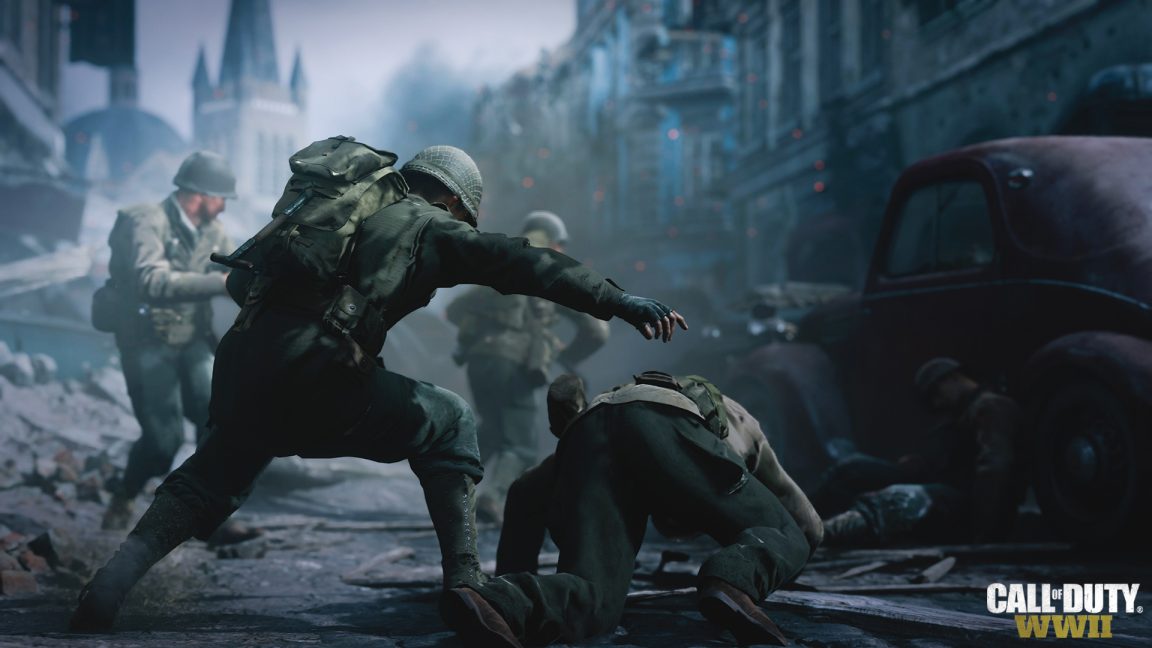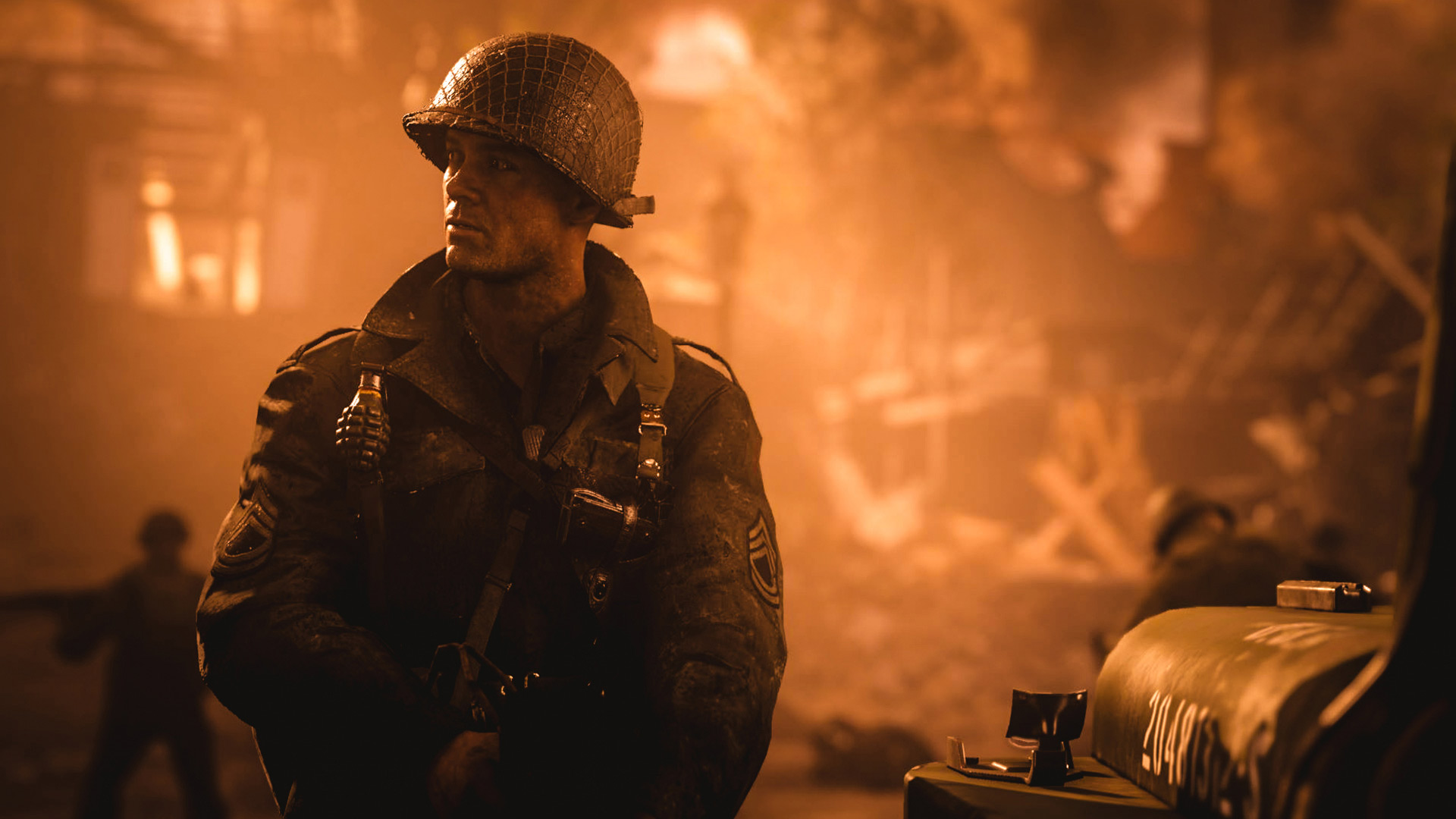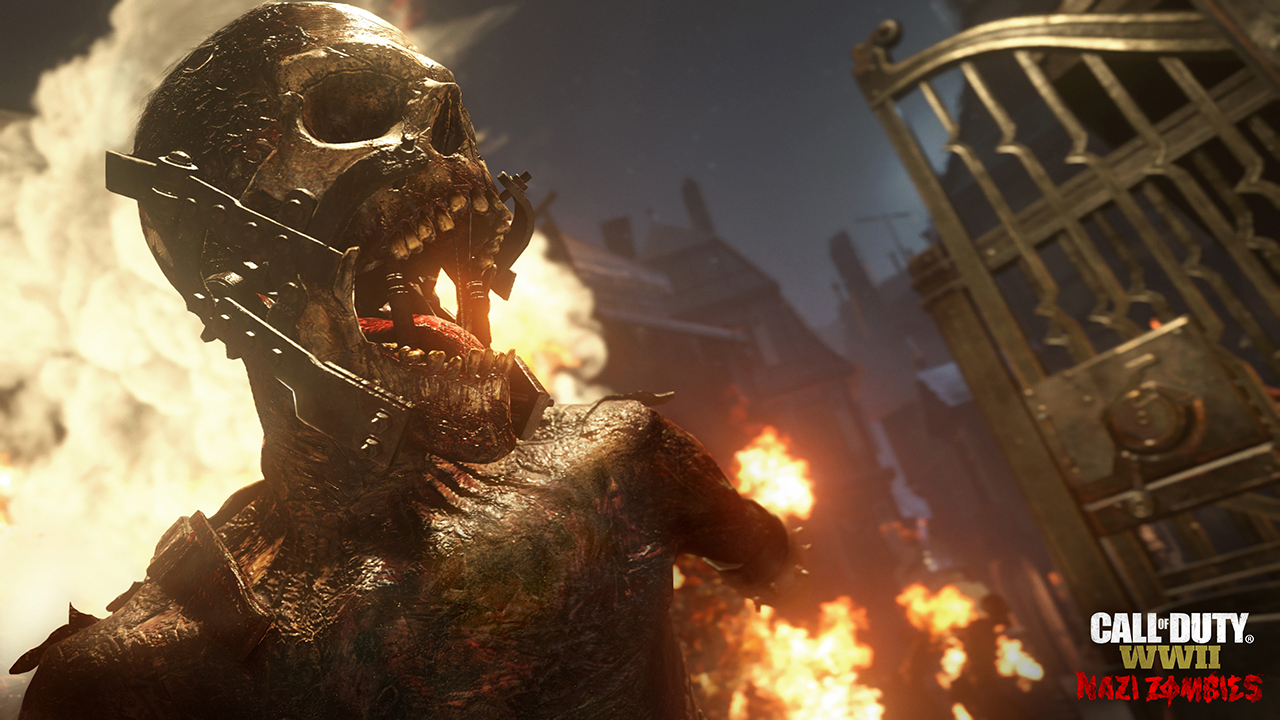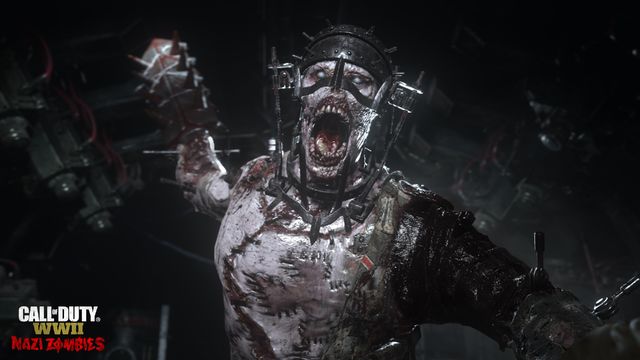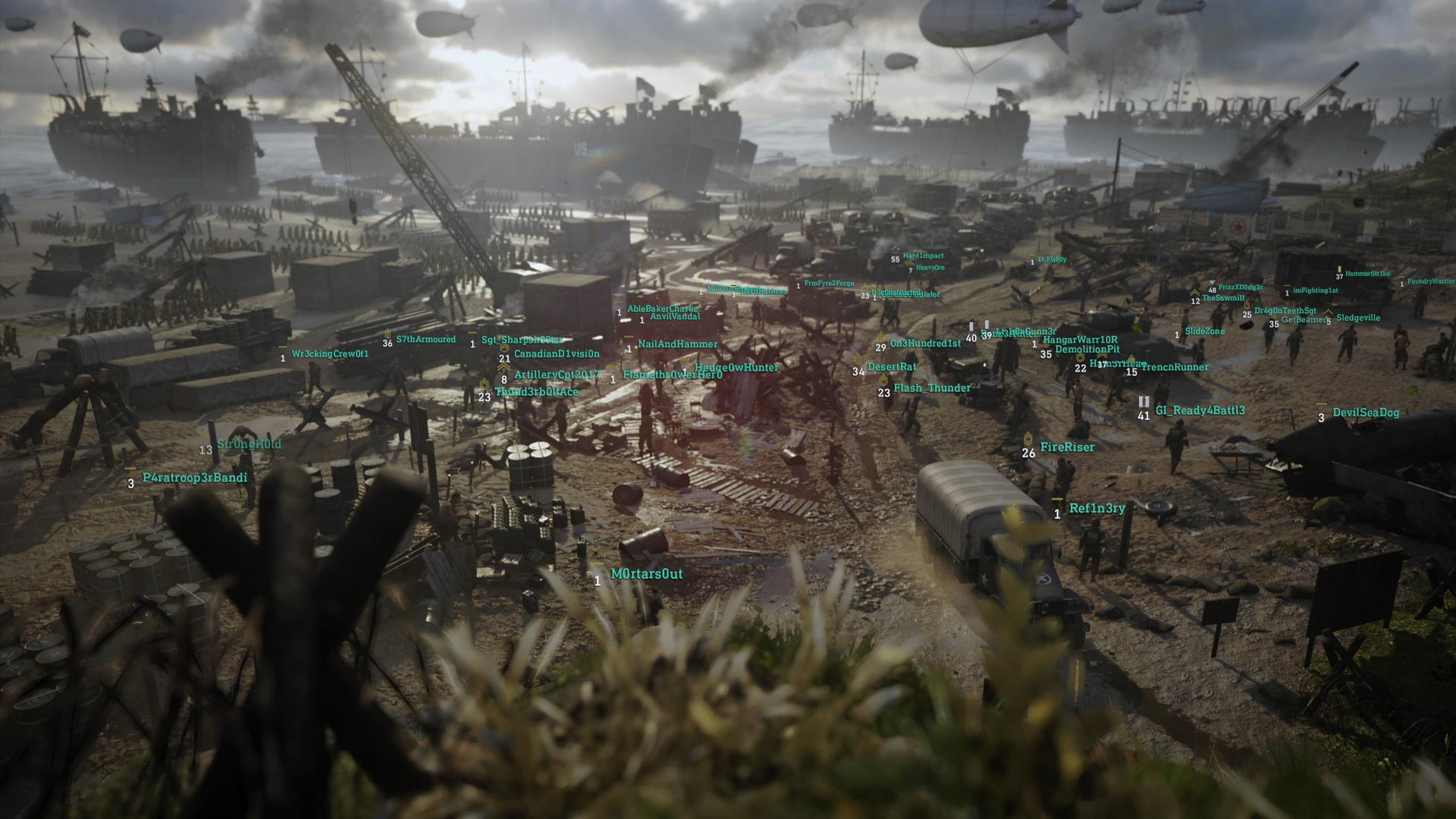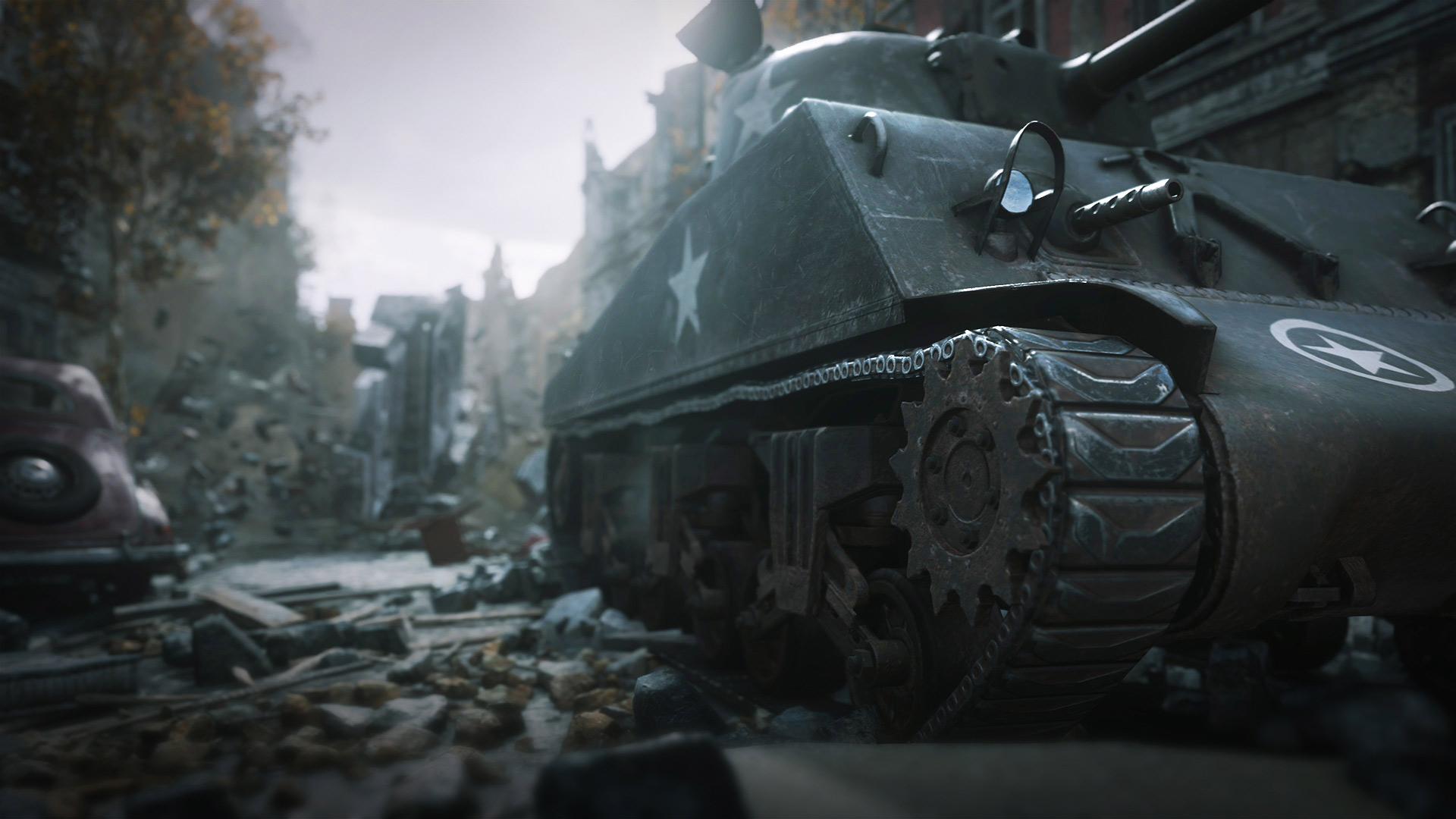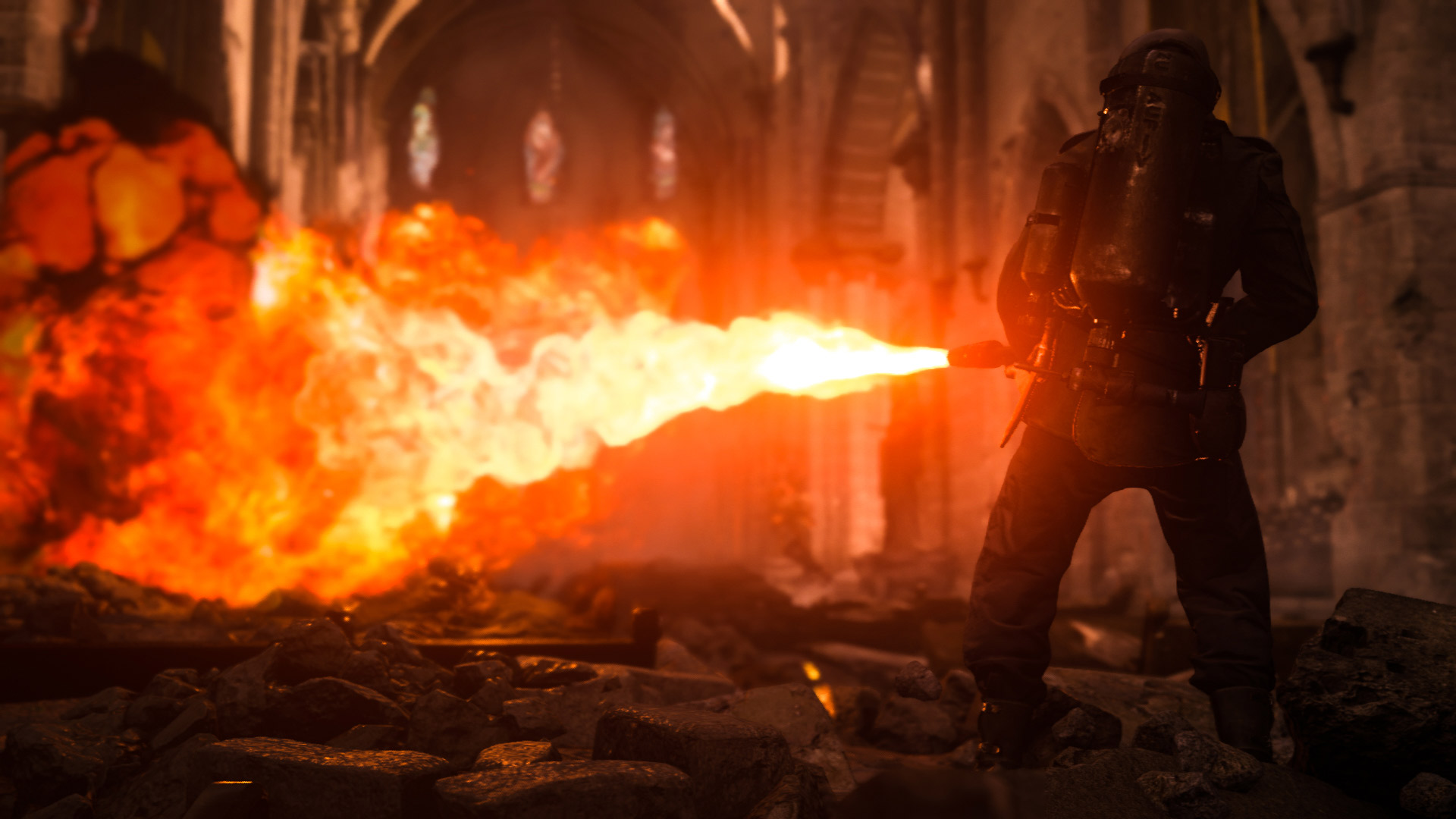Call of Duty WWII XBox One X Review
Summary: Suit up in your best combat fatigues and slap on a jaunty little ditty by The Glen Miller Band, Call of Duty is back, baby!
4.5
Roots, bloody roots!
Available at the launch of the Xbox One X, Call of Duty WWII is probably the pick of the bunch if you want to be stunned with its visuals compared to the other consoles. Playing at the game 2160p, the graphics look sharper, the colours more vibrant and more importantly it runs at 60 frames per second for the majority of time. Add in improved special effects and lighting plus its anti-aliasing and Call of Duty WWII on the Xbox One is pure eye candy.
So with that out of the way, let’s talk abou the game and for the first time in nearly a decade, the Call of Duty series has returned to the bloody trenches and classic boots on the ground combat of The Second World War in response to the desires of the franchises extremely vocal fanbase.
Despite being a relatively solid offering, lacklustre multiplayer notwithstanding, Infinite Warfare performed well under expectations as it found itself going up against the unexpected behemoth that was Battlefield 1, a franchise making a return to a historical theatre of war and seemingly addressing all of the concerns that had been levelled against its direct competitor.
Paramount amongst the complaints from the Call of Duty fanbase was the franchise’s apparent unwavering intent on taking the series from modern warfare into a far-flung future of theoretical weaponry and progressively science fiction trappings; although each individual entry addressed these concepts in their own unique way, genre fatigue had undeniably begun to set in for even the most ardent CoD fan as they found themselves spending the better part of a decade relegated to playing nearly exclusively futuristic efforts with no sign on the horizon of a return to the conflict that made the franchise such an institution.
Yet, Activision were listening and, after much speculation, announced that Sledgehammer’s follow up to Advanced Warfare would be a return to roots, focusing on the European theatre of war during WW2. Having to maintain the legacy of a long running series whilst also improving upon what made that series such as success in the first place is a pretty heavy burden to place upon the shoulders of a development house, so how did Sledgehammer manage to stand up to the immense challenges placed before them?
Despite the many publications portending its demise and the best efforts of some publishers, the single player experience still lives on and I, for one, constantly welcome its inclusion; as much of a kick as I get from the multiplayer and Zombie modes, it’s the narrative and gameplay of the single player campaign the ultimately makes or breaks a Call of Duty game for me and Sledgehammer have clearly strived for authenticity with the WWII camapign, enlisting the services of military Historian Martin Morgan to ensure the veracity of their recreations of actual events.
The structure of a campaign allows the developers to really take you on a journey by placing you in the middle of some incredibly epic set-pieces the sort of which would be impossible to replicate in a dynamic multiplayer experience; of course, the mere inclusion of a SP campaign doesn’t automatically mean it’s of good quality and, as recent titles like the aforementioned Battlefield 1 have shown us, even some mechanically sound campaigns have been severely let down by almost insultingly brief runtimes.
Call of Duty: WWII follows the story of Private Ronald “Red” Daniels and his emotionally turbulent journey from a wet behind the ears farm boy from Texas to a battle-hardened soldier who’s learned to rely upon his instincts in order to contend with both the physical and mental scars of battle.
Without giving too much away, the narrative primarily follows the expected beats of comradeship, moments of jingoistic bravado and conflict; there’s a dynamic present between two characters that very closely echoes that of Elias and Barnes from Oliver Stone’s Platoon and the influence of other major films dealing with the horrors of war are clearly evident, such as an interrogation scene that wouldn’t feel out of place in Inglourious Basterds.
However, just as you start to feel comfortable with where the story is heading, WWII subverts your expectations and delivers a series of emotional gutpunches that not only serve to disorient the player but also casts an added degree of resonance upon the events that have transpired. A welcome addition to the story was the greater degree of focus on Red’s private life; many Call of Duty titles have fallen into the trap of presenting their protagonists through the narrow spectrum of their military experience, but WWII bucks this trend by offering an insight into Red’s personal life and, by proxy, the psychology behind why he makes the choices he does throughout the game.
WWII’s campaign treads that incredibly fine line between being respectful of the gravity that comes with retelling actual events and making for a balls to the wall, adrenaline fuelled blitzkrieg throughout some of history’s greatest battles.
The variety of gameplay up for offer also deserves mention – Call of Duty: WWII puts you in the seat of a tank rampaging through Nazi forces, behind the wheel of a jeep as you careen around the map in pursuit of your squad-mate, sees you impersonating a German official, has you sneaking through enemy territory with a frightened child in your arms, heading the vanguard of a full scale assault on a village, leading a squadron of fighters against the azure blue skies of Germany… The list goes on.
Each stage offered up a new experience and at times it felt almost like WWII shouldn’t be classified solely as a FPS, such is the diversity of gameplay mechanics on display; of course, when you get down to brass tacks, WWII IS a FPS first and foremost, so understandably one of the biggest questions fans will have is “How is the combat?”
Well… Actually, it’s pretty damn good, but I’m not really sure that anyone expected any less. The rate of fire, time to kill and overall feel of the gunplay is as precise as always and it’s clear that Sledgehammer have gone back and refined their approach based on the few minor criticisms levelled at Advanced Warfare’s combat.
Beyond this, there’s not really much more to add – Gone are the automated grenades and hi-tech weaponry with all of their myriad crutches; WWII is paradoxically a reversion in combat mechanics as well as an evolution, putting the onus back on the player’s level of skill and retaining the quality of life improvements of previous titles.
Multiplayer
Perhaps the biggest change that players will immediately notice is the new lobby system; taking inspiration from titles like Destiny, WWII drops players into HQ, an explorable hub in which they can open supply drops, obtain challenges, hone their skills on the firing range, play a selection of classic Activision titles, Prestige and unlock areas and more.
HQ offers up a social experience unlike that in any previous Call of Duty title and Sledgehammer promises that there will be a bevy of Easter Eggs for inquisitive players to uncover; we only managed to locate one of three balls hidden around the map but it’s a nice change to be able to drop into the queue for a game mode and then keep yourself busy mucking around home base while you wait.
As expected, there’s your usual selection of multiplayer modes on offer here, including the classic solo and team Deathmatches, hardpoint and domination, but one of Call of Duty: WWII’s most meaningful contributions to the multiplayer is their much publicised “War” mode.
After a brief glimpse of the newest multiplayer mode “War” during the Beta, I knew that it would be this meatier, objective based take on the series that would consume most of my hours. I can generally hold my own during the frenetically paced deathmatches and the like but I lack the consistency necessary to rise into the upper echelon of players; the more structured and team focused approach to combat and completing objectives on display in this mode is certainly more my speed and makes more novice players feel like they’re making a tangible contribution even when not popping off headshot after headshot.
War prioritises teamwork over going lone wolf, as each match progresses in stages and, if your team isn’t focused on their objective, can be over relatively quickly; you can successfully push your way towards the final objective and have the opposing team consistently on the back foot or, conversely, you can stumble at the first block and participate in your very own recreation of the opening scene from Saving Private Ryan… Having an effective team is paramount to success here.
After each round there is a half-time turnover which sees you taking on the mission from the perspective of the opposing team. This adds some variety to things and ensures that you’ll be completing multiple tasks with every single round, especially as your objective can vary wildly depending on which side you’re on – The strategic approach necessary to constructing a bridge whilst under heavy fire, for example, varies quite considerably from simply holding off the advances of a tank.
Of the missions available, Operation Neptune was definitely my favourite; rushing the beaches of Normandy as teammates and NPCs fall to the deluge of bullets is an exhilarating experience and frantically trying to hold position as an onslaught of enemies converge upon your position gets the pulse pounding like few other objectives.
My preference for this mission in particular may admittedly stem from my rose tinted glasses for the genre itself, with the opening beach scene of Medal of Honor: Frontline still standing for me as one of FPS gaming’s greatest triumphs and WWII’s interpretation of this famous conflict playing out like that classic opening level ramped up to eleven, but the remaining War missions also hold up admirably and, for my money, this will be the “go to” mode for players who would normally tire of the more traditional multiplayer modes.
Design wise, in essence War doesn’t deviate all that much from securing capture points, but having the option to work alongside online teammates in a more structured setting that puts the onus on strategy over running and gunning is certainly welcome and the opening and closing cinematics, whilst admittedly perfunctory, are a nice touch.
As someone who leans more towards modes that reward cooperation over K/D ratio, perhaps the biggest surprise amongst the modes on offer in WWII was how amazingly delightful and engaging an experience Gridiron was.
Ostensibly merely a mode built around simplistic sporting mechanics coupled with classic Call of Duty gunplay (And definitely taking far more cues from “Soccer” than the name would imply), Gridiron is something I would have normally dismissed as a superfluous mode added simply to pad out the selection on offer.
Instead I found that this deceptively accessible football match on steroids would play host to some of the greatest moments in online gaming I’ve ever had. With a solid and equally dedicated team behind you, the intensity of the matches can reach fever pitch and elicit an emotional response that I can only equate with the most extreme of Rocket League matches… It’s that exhilarating an experience and the potential capacity for Gridiron to become a dedicated Esport is one that Activision and Sledgehammer would be wise to explore at some point down the line.
I just hope that the community as a whole doesn’t overlook Gridiron in favour of the more traditional modes, because as solid as they are, it’s amazing how much of a difference to the gameplay the simple addition of a soccer ball can have and constantly building upon, refining and finding new ways to play within the framework of the Call of Duty formula is something that should definitely be encouraged, particularly when doing so produces hidden gems like this.
With five different class types to play around with, there’s bound to be a loadout and skillset that suits your style of play. I switched quickly to a heavy machine gun and raised it a few levels so I could level up its accuracy and damage rate, but as some stages call for a more hands on approach, I also built a loadout around close combat weaponry so I could be prepared for the trenches. It feels like having multiple loadouts on hand for different situations is actually necessary this time around, which is bound to keep complacent players on their toes.
The maps are well designed and offer up more verticality than I had expected going off of what was on offer in the beta; one minor gripe I had with the beta was in regards to spawn points and it seems like Sledgehammer listened to the community and tweaked these in response. The layout of each map is relatively easy to familiarise yourself with yet offer up a lot of hidden sniping spots and vantage points that the dedicated can discover and use to their advantage; ultimately, every game’s multiplayer makes its final stand on the hill of map design and I’m glad to say that Call of Duty: WWII lives to fight another day in this respect.
Nazi Zombies
Given the pedigree behind the studio (Sledgehammer was founded by Glen Schofield and Michael Condrey of Dead Space fame), expectations were understandably high when it came to their take on the Call of Duty staple Zombie mode. After the campier take on the concept seen in last year’s Infinite Warfare, survival horror fans can breathe a sigh of relief as WWII offers up the grittiest and legitimately scariest Zombies experience to date.
That’s not to say that there aren’t moments of inspired humour present, such as the string of inventive profanity that streams out of the mouth of art thief Drosdan, played with aplomb by Doctor Who’s David Tennant, but it’s safe to say that Nazi Zombies is overall a darker and much more serious take on the series that falls more in line with the development house’s survival horror roots than anything that’s come before.
Nazi Zombies introduces a class system, which adds some strategy to how your squad approaches each round. Each class comes with different abilities: For instance, the medic can camouflage themselves from the horde in order to administer first aid. There are four classes in total – Offense, Medic, Control and Support, although after a few rounds you can mix and match abilities in order to create your own class conducive to your individual style of play. Equippable perks also make a comeback and it feels like the level of character customisability is overall higher here than previously offered.
What we experienced of the story didn’t really hint at too much in the greater scheme of things, with additional stages set to come further down the track to flesh the narrative out, but the general premise sees a motley crew of characters – The aforementioned Drostan, sergeant Jefferson Potts (Ving Rhames), former art historian and freedom fighter Olivia Durant (Elodie Yung) and German engineer Marie Fischer (Katheryn Winnick) – On a mission to retrieve stolen artefacts that the Nazis have been using in their experiments with harnessing the power of the paranormal. Marie’s brother Klaus is also being held by the Nazis, providing an emotional impetus for the mission.
What was immediately noticeable when playing through Nazi Zombies was how Sledgehammer have gone out of their way to make the mode more accessible; gone are the incredibly abstruse steps necessary in order to progress through the storyline, replaced instead by clear and concise objectives that are easily accessible through the menu. It’s stunning how much of a difference having a clear objective can drive your teammates, especially as the threat of being dropped into a lobby with a squad entirely unfamiliar with the necessary steps for progression has been completely removed.
Don’t get me wrong, a part of me enjoyed the scavenger hunt nature of previous zombie modes but it was a welcome relief to not have to learn morse code, shave a cat and offer up my firstborn in order to unlock some incredibly obscure and random sequence of events this time around.
With clearly defined mission markers one might assume that the puzzles would be diluted somewhat, but rest assured that even with the added quality of life improvements some of the melon twisters are as devious as anything that’s come before. Combat, as in the campaign and multiplayer, is impeccably tight and the fantastical setting of the story allows for some large scale battles with more futuristic weaponry in a manner that isn’t possible in the more realistic campaign, truly giving players the best of both worlds.
Graphics and Audio
We’ve mentioned the 4K graphics support at the initial part of this review and as you’d expect given the budget behind it, WWII looks the bee’s knees on this console. The character models and animation are as true to life and naturalistic as possible and the environments look absolutely resplendent in their splendour, particularly when compared to photographs of their real life counterparts.
The voice acting and sounds of combat are also top notch and the game boasts a suitably rousing soundtrack that’ll have you tearing up at one moment and will be furiously plucking the strings of your adrenal glands the next.
Final Thought
Call of Duty: WWII is precisely what fans have been clamouring for over the last few years – A return to traditional boots-on-the-ground gameplay with an increased focus on skill and I have no doubt that it will resonate with fans in a way that the last few games have failed to manage.
The “limitations” imposed on the player due to the setting makes one realise just how reliant we’ve become upon the jet-packs and parkour movement and it’s a nice touch to once again see stages based on real world locations rather than some fabricated simulation and knowing that these battles actually took place adds a level of gravitas that has been long absent from the franchise.
With a campaign that not only treats the subject material with the necessary reverence but also injects a surprising amount of pathos into proceedings, some of the most solid multiplayer experiences on offer in years and what could very well be the absolute pinnacle of the Zombies sub-series, Call of Duty: WWII is an easy recommend to both long-time fans and those who may have strayed away from the series over the years.
Suit up in your best combat fatigues and slap on a jaunty little ditty by The Glen Miller Band, Call of Duty is back, baby!
Game Details
Primary Format – Xbox One (X Reviewed), PlayStation 4, Xbox One, PC
Game Genre – First Person Shooter
Rating – R18+
Consumer Advice – High impact violence, online interactivity
Game Developer – Sledgehammer Games
Game Publisher – Activision
Reviewer – Sean Warhurst


